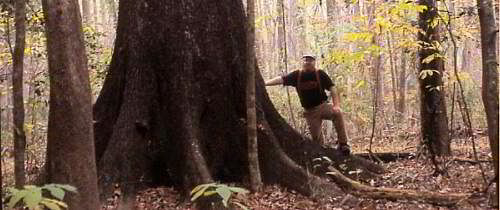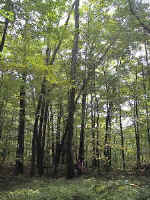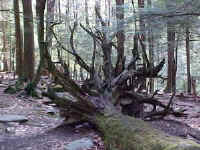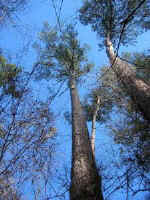Big Tree/ Tall Tree Databases - Archive of Older Posts |
|
|
"He's making a list, and checking it twice."
As part of this ongoing documentation effort Eastern Native Tree Society members have measured thousands of individual trees. The lists below are summaries derived from that data set. This degree of accuracy in the measurement of tree heights allows a variety of scientific research to be conducted with the data set. Among other uses the growth rate of mature trees over a single season can be measured. Variations in both maximum tree height and ratios of circumference to tree height with changes in altitude and latitude can be shown. The regrowth of the crown of a tree after it has been damaged by wind or weather can be measured. These small variations in height would be lost among the errors typically found using other measurement techniques. The goal of these lists are not to replace or compete with the various Big Tree Lists maintained by a variety of other organizations, principally to promote public awareness of big trees. We are simply providing the data on tree height that has been collected using our more rigorous measurement standards. We encourage those maintaining other Big Tree lists to incorporate our information and to adopt our measurement techniques. We frequently offer workshops teaching our measurement techniques. Descriptions of individual sites or trips can be found in the Field Trip Reports and Site Descriptions section of this website. Photographic galleries of many sites are also found in the Eastern Tree Galleries section of this website. The tree height information presented below is arranged in a logical hierarchy with six distinct categories of tree listings: 1) Eastern regional, comprehensive; 2) Eastern regional, species specific or group specific; 3) Statewide, comprehensive; 4) Statewide, species specific or group specific; 5) Locality, either comprehensive, species, or group specific; 6) Special interest or special purpose lists. Canadian Provinces are considered equivalent to states. Great Smoky Mountains National Park is considered as a separate entity on a level equivalent to the states with the understanding that trees listed in some compilations would include GSMNP data as part of their respective state listings. The areas of coverage of some of the lists overlap or are nested. Individual trees may appear on several of the lists because the areas covered by the lists overlap. For example many trees in the Mohawk Trail State Forest list, are also found as a subset of the Massachusetts State list, which in turn is a subset of the the Eastern Regional list. Not all of the lists are updated simultaneously. If a particular tree is found on multiple lists, then the most recent measurement of the height of that tree will be found in whichever list has the most recent date. Generally the date of measurement are also listed as one of the columns in the individual tree height spreadsheets. Anyone using these lists are advised to be careful they are using the most recent measurement for any particular tree in their research. The Tallest Trees in the East spreadsheet is generally updated annually. Lists for individual states or specific areas are usually updated semiannually to annually. Special purpose lists are updated on an irregular basis as necessary. The month and year of compilation for each list is presented beside the hyperlink for that list on the table below. Each individual list also includes a specific date of compilation in its heading or title. Edward Forrest Frank
General Comments:
© Copyright 2002, 2003 Eastern Native Tree Society
|






